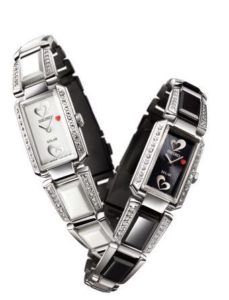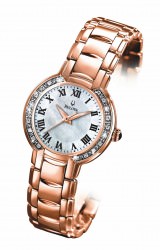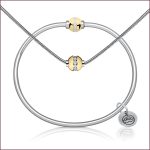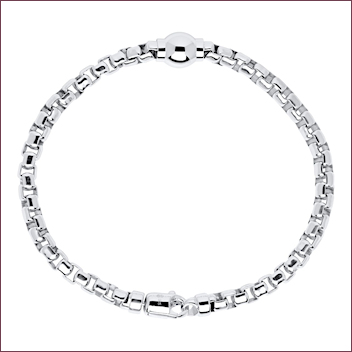All in Good Time
U.S. watch market trends offer a diverse mix in styles, including an embrace of classic, sleeker, thinner looks for men and more mechanical and often extremely artistic designs for women.
 Male Factor
Male Factor
After several years of wide, thick watch styles for men, there’s a return to classicism. Brands are taking pride in producing thinner movements, cased in sleeker watches. Even sports watches are taking on a classic look with Roman numerals and subtle colors.
“Brands are vying to see who can make the thinnest watch,” says Roberta Naas, veteran watch journalist and founder of the timelyperspective.com. “It will be interesting to see where this trend goes.” She cites the recent launch of Jaeger-LeCoultre ultra-thin perpetual calendar watch for under $20,000, signaling for the luxury market that some complexities will be more affordable.
While watch companies are exploring different materials like ceramics and liquidmetal, steel remains an important element, in part because of the price of gold and also technology has improved to allow for diamonds to be set in it.
There’s greater demand for bright patterns and use of carbon fiber, rubber, and ceramic in combination with stainless steel in ways that highlight basic features, adds Alan Grunwald, president of the private label watch company, Belair Time.
 Where gold is used, there’s a strong tendency for pink. “Color accents are a definite favorite for men,” hails Tricia Norton, global chief marketing officer Bulova, also citing black ionic plating. She ranks multi-function and chronograph technology a significant trend. Naas adds that chronographs will never go away, as companies continue to produce designs that feature new ways to read dials, and are often inspired by other segments like cars and planes.
Where gold is used, there’s a strong tendency for pink. “Color accents are a definite favorite for men,” hails Tricia Norton, global chief marketing officer Bulova, also citing black ionic plating. She ranks multi-function and chronograph technology a significant trend. Naas adds that chronographs will never go away, as companies continue to produce designs that feature new ways to read dials, and are often inspired by other segments like cars and planes.
“Men favor timepieces that are both functional and fashionable; a statement piece to wear to work and beyond,” says Dana Bell, spokesperson for Citizen. “There’s a greater fusion of art and technology in men’s watches.”
 Ladies Choice
Ladies Choice
Naas hails 2013 as the year for women’s watches, citing that Vacheron Constantin came out strong in the category at the Salon International de la Haute Horlogerie in Geneva earlier this year, an important signal of what’s to come.
Ladies watches are almost all mechanical now, except for jewelry and some metiers pieces that contain quartz. Most brands have tourbillons (which is the mechanism exposed through a window on the watch’s face or back), and this continues to be the most revisited and developed complication in the industry. Minute repeaters are also emerging as a hot new complication that modern watchmakers are reviving in special, technically advanced ways.
There’s a greater tendency for styles that are very artistic, like a miniature jewel or painting on the wrist, describes Meehna Goldstein, watch expert and stylist found on blogs.christies.com/longitude. Overall, more glam is trending for ladies. There are very few styles that do not contain some diamonds, even if it is just the hour markers. Also in fashion, métiers dials featuring techniques like enameling, gem setting, miniature painting, marquetry, and engraving.
Bell cites more interest for oversized watches with larger cases. Ceramic, especially white is chic. Rose gold, a trend that has proven to be en vogue for a while, is featured in either the entire timepiece or as accents. Norton concurs  that bold “boyfriend” styles for women are strong, especially with diamonds and crystals, and multi-function dials. Brighter colors and rose and yellow gold tones are popular, as well bangle and jewelry watches.
that bold “boyfriend” styles for women are strong, especially with diamonds and crystals, and multi-function dials. Brighter colors and rose and yellow gold tones are popular, as well bangle and jewelry watches.
Next to big sizes and small artworks, Grunwald cites greater use of a variety of decorative elements in ladies watches like mother-of pearl, bright fashion colors, unique patterns, and exciting chronograph designs that serve more as a statement of style than function.
For both men and women, vintage is a significant direction, reports veteran watch journalist William George Shuster. “It’s one trend that remains vibrant, strongly fed by watch consumers’ fascination and nostalgia with classic and retro watch styles, specific models of years long past, and leading watch brands’ mining their archives for successful or evocative models—notably from mid-1920s to late 1960s,” he tells, attributing the appeal of retro fashions as a key motivator.







